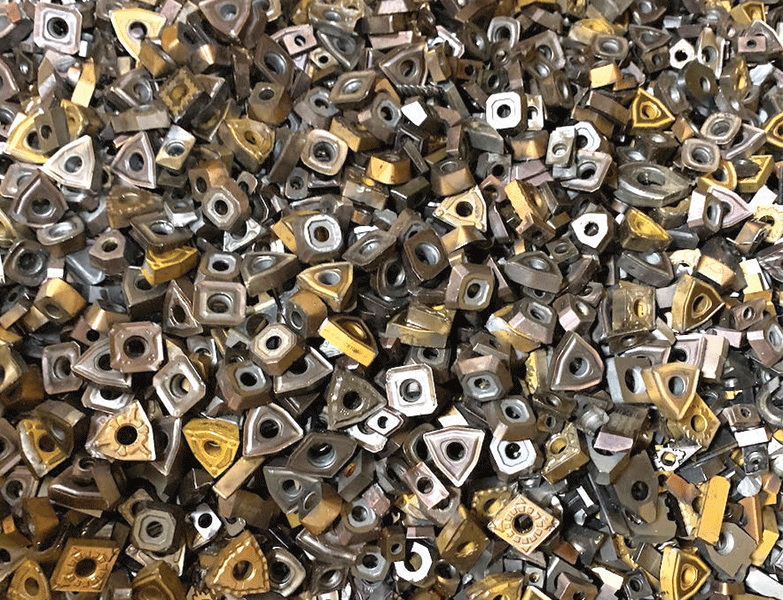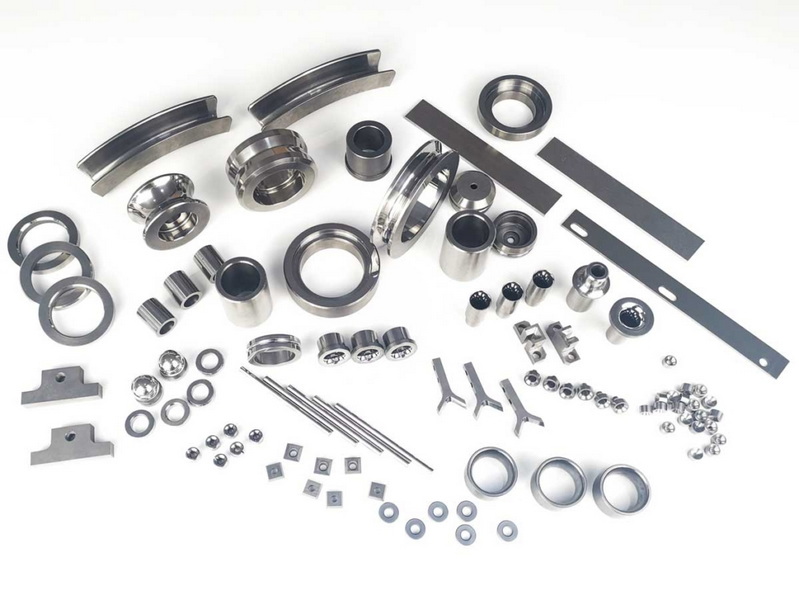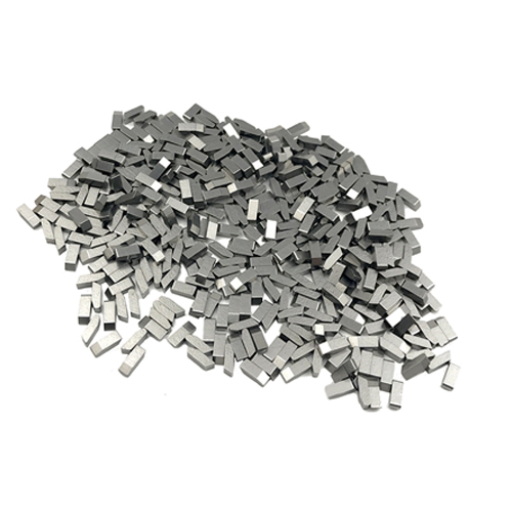Content Menu
● Introduction to Rust and Corrosion
● What is Tungsten Carbide?
● Properties of Tungsten Carbide
>> Hardness and Wear Resistance
>> Corrosion Resistance
● Does Tungsten Carbide Rust?
● Factors Affecting Corrosion Resistance
>> Binder Materials
>> Environmental Conditions
>> Manufacturing Process
● Applications of Tungsten Carbide
● Advantages and Limitations
>> Advantages
>> Limitations
● Future Developments
● Conclusion
● Frequently Asked Questions
>> 1. What is the primary reason for tungsten carbide's corrosion resistance?
>> 2. Can tungsten carbide be used in acidic environments?
>> 3. How does the choice of binder affect tungsten carbide's corrosion resistance?
>> 4. What are the common applications of tungsten carbide?
>> 5. How can the lifespan of tungsten carbide be extended?
● Citations:
Tungsten carbide is renowned for its exceptional hardness, wear resistance, and corrosion resistance, making it a preferred material in various industrial applications. However, the question remains: is tungsten carbide truly anti-rust? To delve into this topic, we need to understand what rust is, how tungsten carbide is structured, and its properties that contribute to its resistance against corrosion.

Introduction to Rust and Corrosion
Rust specifically refers to the corrosion of iron and its alloys, such as steel, which occurs in the presence of moisture and oxygen. Corrosion, on the other hand, is a broader term that describes the deterioration of metals due to chemical reactions with their environment. This can include rusting but also other forms of oxidation or chemical degradation.
What is Tungsten Carbide?
Tungsten carbide (chemical formula: WC) is a compound made of equal parts tungsten and carbon atoms. It is known for its extreme hardness, approaching that of diamond, and is used in cutting tools, abrasives, and even jewelry due to its durability and resistance to wear.
Properties of Tungsten Carbide
Hardness and Wear Resistance
Tungsten carbide is approximately three times as stiff as steel and is twice as dense. Its hardness ranks about 9.0–9.5 on the Mohs scale, making it suitable for applications requiring high wear resistance. This property is crucial in cutting tools, where maintaining sharp edges and minimizing wear is essential for efficient machining.
Corrosion Resistance
Tungsten carbide's corrosion resistance is attributed to its chemical stability and the use of binders like cobalt or nickel during its production. While cobalt is commonly used for its strength and toughness, nickel offers superior corrosion resistance, especially in strong acidic environments. The choice of binder can significantly influence the overall performance of tungsten carbide in corrosive conditions.
Does Tungsten Carbide Rust?
Tungsten carbide does not rust in the traditional sense, as rust refers specifically to the corrosion of iron and its alloys. However, tungsten carbide can experience corrosion under certain conditions, such as exposure to strong acids or high temperatures. In such scenarios, the binder material can leach out, compromising the structural integrity of the tungsten carbide.
Factors Affecting Corrosion Resistance
Binder Materials
The choice of binder in tungsten carbide, such as cobalt or nickel, significantly affects its corrosion resistance. Cobalt is more prone to corrosion in acidic environments, while nickel provides better resistance. This is because nickel forms a protective oxide layer that inhibits further corrosion.
Environmental Conditions
Exposure to acidic or alkaline environments can compromise the corrosion resistance of tungsten carbide. Proper maintenance and storage in dry conditions are crucial to extending its lifespan. Additionally, avoiding exposure to high temperatures can prevent thermal degradation of the binder.
Manufacturing Process
The manufacturing process also plays a role in determining the corrosion resistance of tungsten carbide. Techniques like sintering and hot isostatic pressing (HIP) can improve the density and reduce porosity, thereby enhancing its resistance to corrosion.
Applications of Tungsten Carbide
Tungsten carbide is widely used in:
- Cutting Tools: Due to its hardness and wear resistance, it is ideal for high-speed machining.
- Jewelry: Tungsten carbide rings are popular for their durability and resistance to scratches.
- Industrial Components: Used in bearings, nozzles, and other parts requiring high wear resistance.
- Aerospace: Its high density and strength make it suitable for rocket nozzles and other aerospace applications.

Advantages and Limitations
Advantages
- Durability: Offers exceptional wear resistance, making it ideal for long-term use.
- Corrosion Resistance: Provides good resistance against corrosion, especially with nickel binders.
- Versatility: Used in a wide range of applications from cutting tools to jewelry.
Limitations
- Cost: Tungsten carbide is more expensive than many other materials.
- Brittleness: It can be brittle and prone to cracking under impact.
- Manufacturing Complexity: Requires specialized equipment for production.
Future Developments
Research is ongoing to improve the properties of tungsten carbide, such as enhancing its toughness and reducing brittleness. New binders and manufacturing techniques are being explored to expand its applications and improve its performance in corrosive environments.
Conclusion
Tungsten carbide is not prone to rusting in the same way iron and steel do, thanks to its chemical composition and high hardness. However, it can experience corrosion under specific conditions. Its corrosion resistance makes it an excellent choice for various industrial applications, especially when combined with appropriate binders like nickel.

Frequently Asked Questions
1. What is the primary reason for tungsten carbide's corrosion resistance?
Tungsten carbide's corrosion resistance is primarily due to its chemical stability and the formation of a protective layer when exposed to air. Additionally, the use of binders like nickel enhances its resistance in corrosive environments.
2. Can tungsten carbide be used in acidic environments?
While tungsten carbide has good corrosion resistance, it is not ideal for strong acidic environments. The cobalt binder can leach out, compromising its structural integrity. Nickel binders offer better resistance in such conditions.
3. How does the choice of binder affect tungsten carbide's corrosion resistance?
The choice of binder significantly affects tungsten carbide's corrosion resistance. Cobalt is more prone to corrosion in acidic environments, whereas nickel provides superior resistance, making it suitable for applications requiring high corrosion resistance.
4. What are the common applications of tungsten carbide?
Tungsten carbide is commonly used in cutting tools, jewelry, and industrial components like bearings and nozzles due to its hardness and wear resistance.
5. How can the lifespan of tungsten carbide be extended?
The lifespan of tungsten carbide can be extended by storing it in dry conditions, avoiding exposure to corrosive substances, and using proper maintenance techniques such as lubrication and cleaning.
Citations:
[1] https://www.boyiprototyping.com/materials-guide/does-tungsten-rust/
[2] https://www.jlsmoldparts.com/talking-corrosion-resistance-tungsten-carbide-grades/
[3] https://en.wikipedia.org/wiki/Tungsten_carbide
[4] https://shop.machinemfg.com/tungsten-carbide-coating-comprehensive-guide/
[5] https://www.carbide-part.com/blog/does-tungsten-carbide-rust-a-deep-dive-for-answers/
[6] https://www.linkedin.com/pulse/corrosion-resistance-tungsten-carbide-shijin-lei
[7] https://shop.machinemfg.com/the-pros-and-cons-of-tungsten-carbide-a-comprehensive-guide/
[8] https://www.carbide-part.com/blog/an-in-depth-analysis-of-tungsten-carbides-corrosion-resistance/
[9] https://www.hyperionmt.com/en/products/Wear-Parts/corrosion-resistant-carbide/
[10] https://www.metal-am.com/kennametal-offers-its-most-corrosion-resistant-tungsten-carbide-grade-for-am/
[11] https://www.reddit.com/r/advancedGunpla/comments/1epph1j/are_all_tungsten_tools_rust_proof/
[12] https://htscoatings.com/blogs/our-craft-our-culture/three-tungsten-carbide-thermal-spray-coatings-and-their-uses
[13] https://www.yatechmaterials.com/en/technology/what-is-corrosion-resistant-tungsten-carbide/
[14] https://stock.adobe.com/ca/search?k=tungsten+carbide
[15] https://www.istockphoto.com/photos/tungsten-carbide
[16] https://www.materialsperformance.com/articles/coating-linings/2017/12/nanostructured-tungsten-carbide-coatings-protect-against-corrosion
[17] https://www.sciencedirect.com/science/article/pii/S0169433222021948
[18] https://www.gettyimages.ca/photos/tungsten-carbide
[19] https://www.retopz.com/57-frequently-asked-questions-faqs-about-tungsten-carbide/
[20] https://theartisanrings.com/en-ca/pages/do-tungsten-rings-rust-debunking-common-myths
[21] https://www.hyperionmt.com/en/Resources/materials/cemented-carbide/corrosion-resistance/
[22] https://hardide.com/wp-content/uploads/2020/05/Corrosion_20101.pdf
[23] https://www.ipsceramics.com/technical-ceramics/tungsten-carbide/
[24] https://www.haydencorp.com/tungsten-carbide-coatings
[25] https://tungstenparts.com/does-tungsten-carbide-tarnish/
















